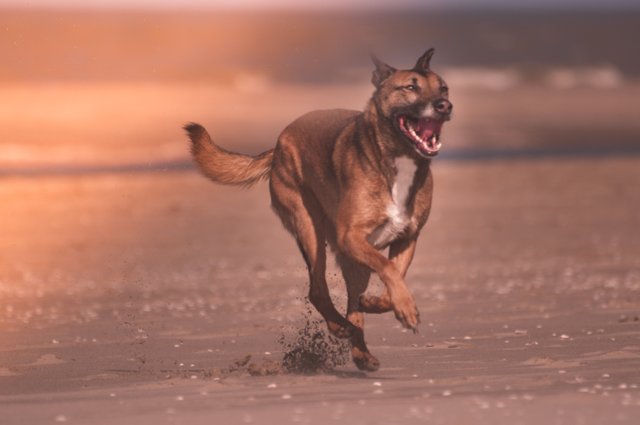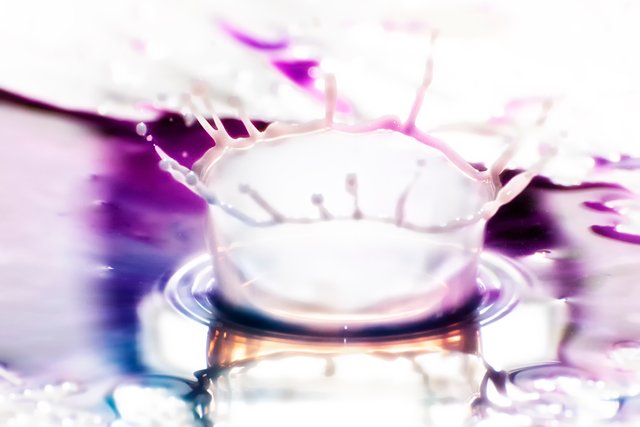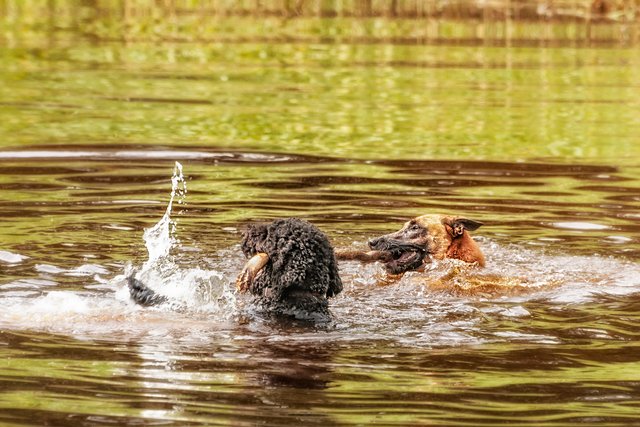Photography : A short tutorial about Motion Photography!
Motion Photography.
Once you have caught the photography virus ... it is almost impossible to ever get rid of it again. Sometimes it will be more and sometimes it will be less, but the experience has taught me that you will never really get rid of it. And that you always want to achieve something more, want to take on a new challenge, improve your photography skills, innovate and innovate brings new challenges.
And sooner or later you will have to deal with the different possibilities to photograph Motion. But how do you do that?
There are different ways to photograph movement, and the most familiar ways I want to explain to you in this short tutorial.
The first is of course the most used and the most chosen way of photographing motion ...
- FREEZING THE MOVEMENT.
Photographing this way of movement is the most common way of photographing photography. To prevent an unsharp photo due to movement, we set a faster shutter speed than the subject of your photo moves.
And depending on your subject, this shutterspeed will start at about 1 / 125s and higher of course. A real rule is not to give here, but logically your shutter speed can be slower if you photograph a walking person than when you photograph a horse in a gallop. Of course this are just examples.
You can do this in the total Manual mode of your camera, where you set all the settings yourself, but when it comes to only shutterspeed you can also choose to put your camera in the SHUTTERSPEED PRIORITY PROGRAM. This determines the shutterspeed you want and the camera automatically adjusts the other settings that are necessary to achieve neutral exposure. Can be easy if you do not have much knowledge of the lighting triangle yet.
A few sample images of frozen movement.
- LONG EXPOSURE.
This is done the most by putting the camera on a tripod and capturing the movement of the subject of your photo.
How long or how short your shutter time should be for this is again dependent on the movement of your subject. A flowing river needs a slower shutter speed to show movement, than a waterfall that crashes down with thunderousforce. Or a fairground attraction that moves through your image at full speed.
With this form of motion photography, your subject is photographed in motion and the background stays sharp. Don't forget to turn off the vibration reduction of your lens when using a tripod.
- PANNING TECHNIQUE.
Panning is a different way of movement. Here you keep your subject in focus, but show the movement through a blurred background.
In this technique you draw the camera on the speed of your subject with the movement of your subject. This keeps your subject sharp, but the background is blurred by movement. This gives a very dynamic picture.
Here, of course, it is of course playing with the correct shutter speed that is needed, and here too you can do this in the shutter speed pre-selection of your camera. With an important difference. You do NOT use a tripod with this technique.
You start by focusing on your subject, press the shutter button halfway and start to follow your subject, then you continue to make the picture and you keep moving the camera with your subject at the same speed in a straight line. Complete the movement all the way until you actually hear the shutter of the camera close to obtain the best possible effect.
Search with your elbows support with your body and move with your whole body in this line. That gives the most stability and the best results.
Pay attention to this technique, some lenses have two positions vibration reduction, one to compensate for the up and down movements. The other to compensate for horizontal movements. In this case, switch off only the horizontal vibration reduction. You need it to capture the movement in your background.
- TIMELAPSE
And the latest technique to photograph movement that I show in this blog is the timelapse .
A timelapse is a mounted video of all separate photos taken from a tripod over a longer period of time.
I will show the video here, and this is a technique for recording movement. But how the timelapse works exactly ... This was actually my first timelapse ever. I know it's not perfect, but it is a timelapse, and the secret of this timelapse is that it is made with photo's!
I will write a full blog for the Timelapse. Because it is really worth it to know how and to actually do it. I know I will soon go for the next.
Hopefully you all stay tuned until the next tutorial!






I need to learn the basics before I can jump to this level. I like how you simplify everything and it makes perfect sense. Very true that once you get the bug you just want to learn more and more. I am going back to dig up your earlier tutorials.
good post
thanks
always good to go over the different types
personally, BIG fan of long exposure, and also, as a birder, I need to freeze often
Nice shots👍👏
Posted using Partiko iOS
Fantastic post hetty, thank you so much for the tutorial!
Woah I didn't know about the effort behind thses mesmerizing shots, simply amazing.
Posted using Partiko Android
I started to take photos last year and I really fell in love with it. It's so amazing to capture the world around us. I have focused on object that don't move as I was not sure how to do the motion photography. I've tried a few times but got frustrated quickly as it didn't go how I wanted. Yeah, I know that I need patience to learn but I unfortunately don't have it when I get too excited :)
I like the long exposure photography and hope that I will able to learn it once :) Thank you for sharing your tutorial. There is some very useful info included. And I like your time lapse :) You can't go wrong with sun! :)
Have a good start of the week!
This post was shared in the Curation Collective Discord community for curators, and upvoted and resteemed by the @c-squared community account after manual review.
@c-squared runs a community witness. Please consider using one of your witness votes on us here
The pictures are amazing and thanks for your tutorial, can't wait for the time lapse edition..
Posted using Partiko Android
Hi hetty-rowan,
Visit curiesteem.com or join the Curie Discord community to learn more.
As someone who likes to take fotos (photos) but can only do it from a phone and also someone who likes to photoshop fotos as well, this post is interesting as something of old tricks and ways to get a desired foto. Quite interesting the camera-work involved in order to capture the frames wanted, especially in a day-n-age like this when photoshop can brush up the magic needed when the foto acquired is not the foto needed/wanted. Equally interesting the ways the camera has to be held in order to achieve such affects.
Gotta give yah props for taking the time to help journalists, fotographers, picture takers and all sorts of people realize a World beyond a simple click of a camera button and the many built-in features from the hardware alone that allows them to capture the desired foto. Wouldn't be surprised if fotos start becoming better after this point! Hue!~